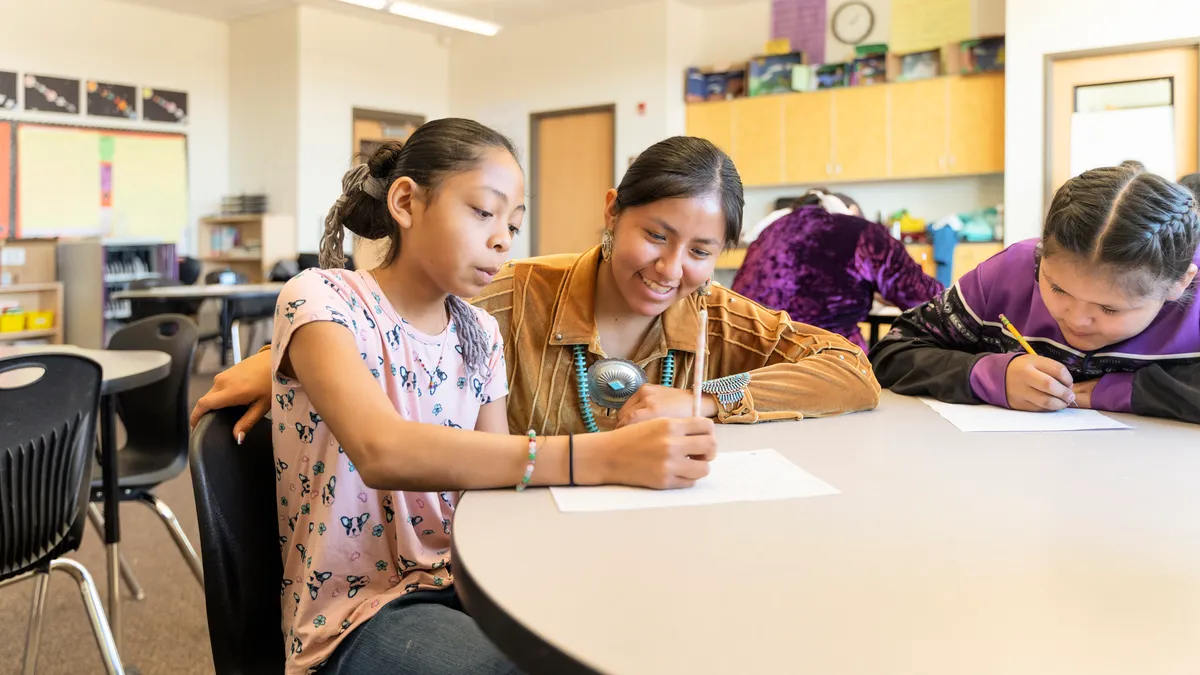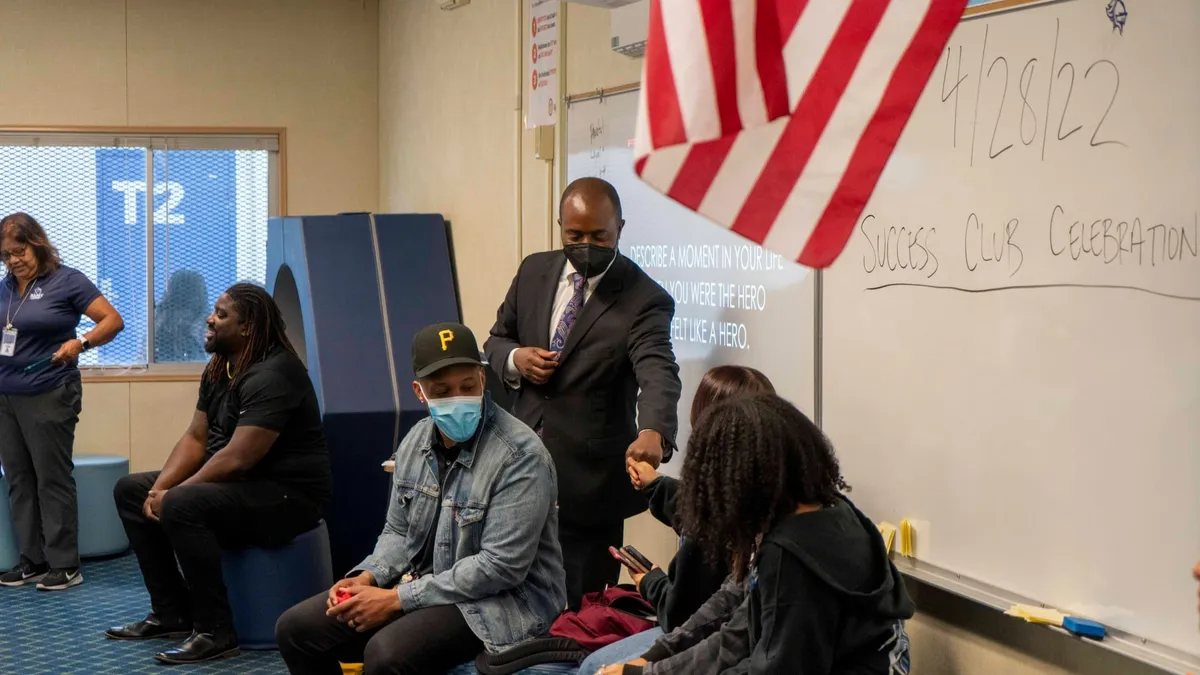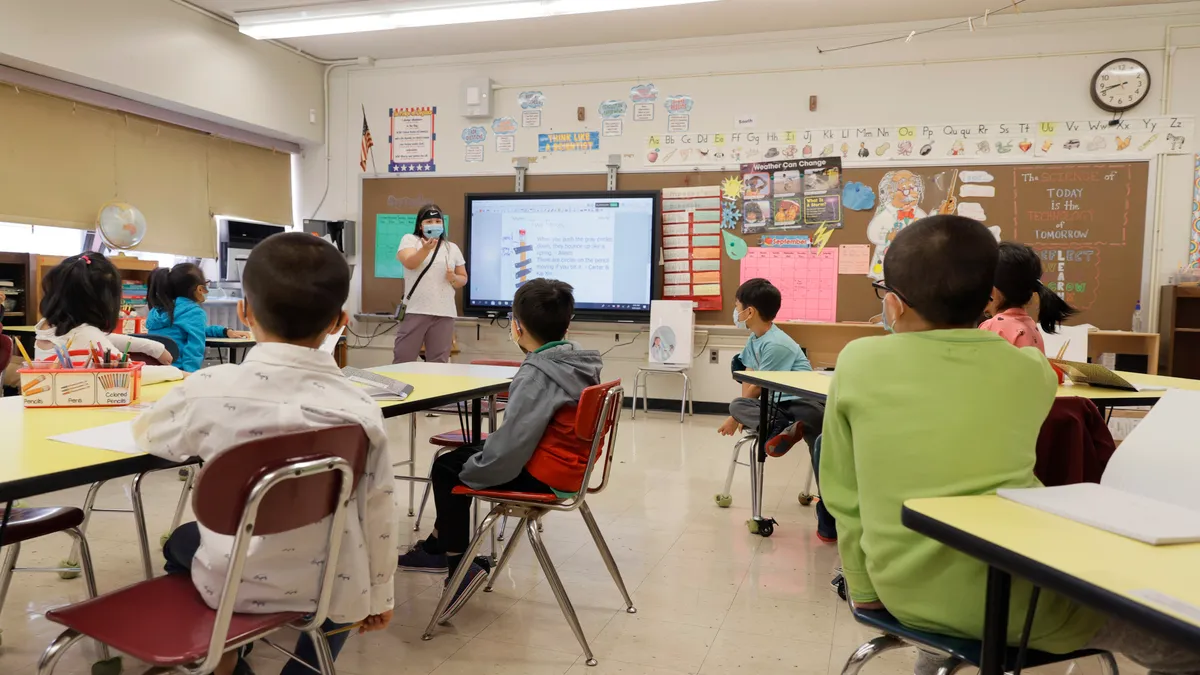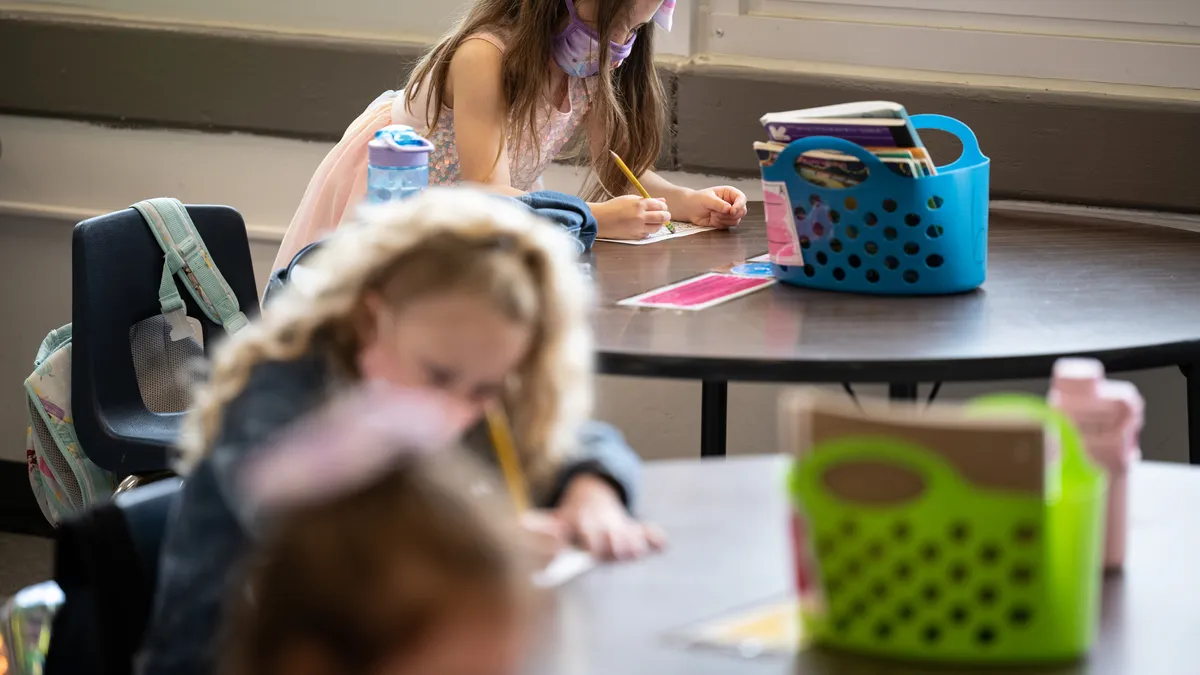For teachers to admit to their students they don’t know something can be very uncomfortable. Having that conversation captured on video can leave teachers feeling even more exposed.
The school, in this case, was Pittsburgh Allegheny K-5, where Melissa Butler, a kindergarten teacher at the time, was leading a technology project focusing on circuitry. The videotaping of teachers’ lessons was part of Simple Interactions, a project of the Fred Rogers Center, in partnership with researchers at Harvard University and the University of Pittsburgh.
The intent was to draw teachers’ attention to the moments in which they truly connected with and supported their students — even if they didn’t know a lot about circuitry.
Reviewing the videos allowed teachers to “notice and name the beautiful elements of their practice,” says Butler, who now works as a consultant. “Teachers were who they authentically are. They were learners, too. They listened. They noticed. They said ‘hmmm...’ They wondered alongside children. They asked children to explain their thinking.”
“A Beautiful Day in the Neighborhood,” starring Tom Hanks as Rogers, gives baby boomers an opportunity to reminisce on what they learned from the caring man in a cardigan. But Rogers’ work is continuing to influence today’s children through Simple Interactions.
The approach is inspired by “Fred’s words that we learn and grow best through relationships,” says Roberta Schomburg, the executive director of the center, founded in 2003 at St. Vincent College in Rogers’ hometown of Latrobe, Pennsylvania.
Junlei Li, a senior lecturer in early-childhood education at the Harvard Graduate School of Education, developed the program, which is based on Rogers’ belief that media can be a positive force in children’s lives and his words that “deep and simple is far more essential than shallow and complex.”
Along with recording adult-child interactions, the model highlights four elements of human development — connection, reciprocity, inclusion and opportunities to grow.
That data is then used as feedback for teachers and others working with children, and a one-page resource illustrating the interactions — labeled X, Y or Z — serves as a tool for conversation. For example, the tool defines inclusion as “inviting and involving the least likely or least able to engage” and shows an X interaction as the adult interacting with three faces that look the same and not with the one that looks different.
Another interaction — reciprocity — is defined as “balancing roles of engagement during joint activity,” with a Z interaction illustrating two-way “serve and return” — a term used by the Center on the Developing Child at Harvard University to describe back-and-forth interactions that promote healthy development.
“In the world of standards, curricula, grades and standardized tests, it can be really, really easy to lose sight of the essential ingredients to powerful learning environments,” says Thomas Akiva, an associate professor of education at the University of Pittsburgh, who has conducted research on the model.
“We tend to value content over relationships — that is, particularly at the secondary level, teachers must pass content area tests. But it is the interaction and relationships that make or break the learning environment.”
Capturing ‘moments in time’
Dana Winters, the director of the program and an assistant professor of psychology at St. Vincent College, says teachers and other adults working with children are often unaware of how their exchanges with children are supporting or inhibiting learning. It’s the “moments in time that seem routine” that can impact the strength of relationships, she says.
Her team does the initial videotaping and works with school and program staff members to continue the process if they are interested.
In a school setting, interactions both in and out of the classroom — such as those with the crossing guard — are viewed as valuable. In a center with younger children, even a diaper change is considered a time in which adults and children can connect. The concept, Winters says, is to “make the most of things that we have to do.”
The program was also recently honored by HundrED, a nonprofit based in Helsinki, Finland, that recognizes “inspiring innovations” in K-12 education that have an impact and can be scaled broadly.
Schools, after-school and summer programs, early-childhood centers and other organizations working with children and youth in 35 states have implemented the model. And so far this year, the tool has been downloaded 3,000 times, Winters says.
In Georgia, for example, the approach has been used with caregivers to support language development with infants and toddlers. In Arizona, child care centers are using the tool to improve quality. Winters is also working with the leaders of a summer camp serving children in Colorado and Wyoming on how to strengthen connections between students and camp staff members even though their relationships last for only a few months.
In another project, educators facilitating makerspaces at the Children’s Museum of Pittsburgh have used the model to learn more about how interactions can support learning in that setting. International users include early-childhood programs in China and residential care programs for youth in Canada and Scotland.
Bringing ‘Fred in the room’
Well before Simple Interactions was developed, the center worked with the National Association for the Education of Young Children to provide guidance to teachers on the proper role of technology in early-childhood education — an issue that continues to be contentious in the field.
“When you bring Fred in the room, people tend to calm down a bit. He was a child development person,” says Chip Donohue, who founded the Technology in Early Childhood Center at the Erikson Institute in Chicago and is also a senior fellow at the Fred Rogers Center. He has said in presentations that young children’s use of tech should be interactive while they're still interacting with peers and adults.
Donohue and Schomberg developed a joint position statement that reviews the research on the impact of technology on young children’s development and lays out principles for using digital media in the classroom in healthy and positive ways.
“We weren’t trying to guess what Fred would do with an iPad today,” Donohue says, adding the intent was to acknowledge children are growing up surrounded by technology, and educators will be faced with choices about when digital tools should be part of instruction.
The position statement, Donohue says, continues to be relevant as debates over the role of technology continue or as new tools, such as virtual reality, are implemented in the classroom. On one hand, concerns about “screen time” remain. But on the other hand, there is research pointing to the learning benefits of digital media, such as a recent PBS study showing positive effects on young children’s knowledge of science and engineering concepts.
“When you bring Fred in the room, people tend to calm down a bit. He was a child development person."

Chip Donahue
Senior fellow, Fred Rogers Center
The challenge, however, was finding “exemplars of relationship-based technology,” Schomburg says. Simple Interactions allows teachers to review their own practice, but also watch videos of others.
While technology has always been part of Simple Interactions through videotaping, the team’s focus on interaction is also changing with digital media now such a large part of children’s lives.
The goal is to better understand what quality interactions look like when technology is involved and to ensure “when we’re in schools where technology is ever-present, that the focus is still on the relationship,” Schomberg says. “We feel this is building on … how [Rogers] used television. He really had to reinvent that communication system.”
Donohue notes because there are not yet a lot of teacher educators who “know how to use tech well,” Simple Interactions’ focus on technology is filling a void.
Not for evaluation
Winters stresses the videos and the tool are meant to be used for professional growth, not evaluation. She says they are ideally shared among educators or other providers in a “community of practice,” or as part of a coaching relationship.
But that can be difficult for teachers who have worked in recent years under strict accountability systems, Butler says.
Because the tool is essentially a rubric, with Z representing an ideal interaction, “immediately their brains think ‘I need to be over here, and I’m going to be judged and evaluated,’” Butler says, adding it’s easy to underestimate how long it takes teachers to stop critiquing themselves. The program materials stress there are situations in which any one of those interactions might be appropriate.
Akiva, who has studied the model, particularly in out-of-school environments, finds once the adults “get over their initial trepidation of seeing themselves on video,” they appreciate the connections they form with others receiving the training, and their interactions with children improve. Research is also showing the four components of interactions apply across a variety of settings — not just schools and after-school programs, but also libraries and nature centers, for example.
An additional study focused on racial and socioeconomic opportunity gaps. The authors find that, compared to out-of-school learning programs serving white children from higher-income families, those serving children from low-income and African American families have less educated and experienced staff members and are more likely to focus on academics than enrichment.
But there were no differences in the quality of interactions between staff members and children.
“This is a positive finding,” the authors write, “because adult-child interactions are one of the most important OSL program features and they are a strong predictor of positive development resulting from OSL participation.”
As a teacher leader, Butler learned “what is realistic in terms of professional learning,” she says. “The simple approach was one of the most essential ingredients in allowing teachers to trust each other.”
She adds through Simple Interactions, teachers also focus on learning aside from what is typically measured as student outcomes.
“There is value in the moment,” she says, “not because you’re going to get something out of it.”




















